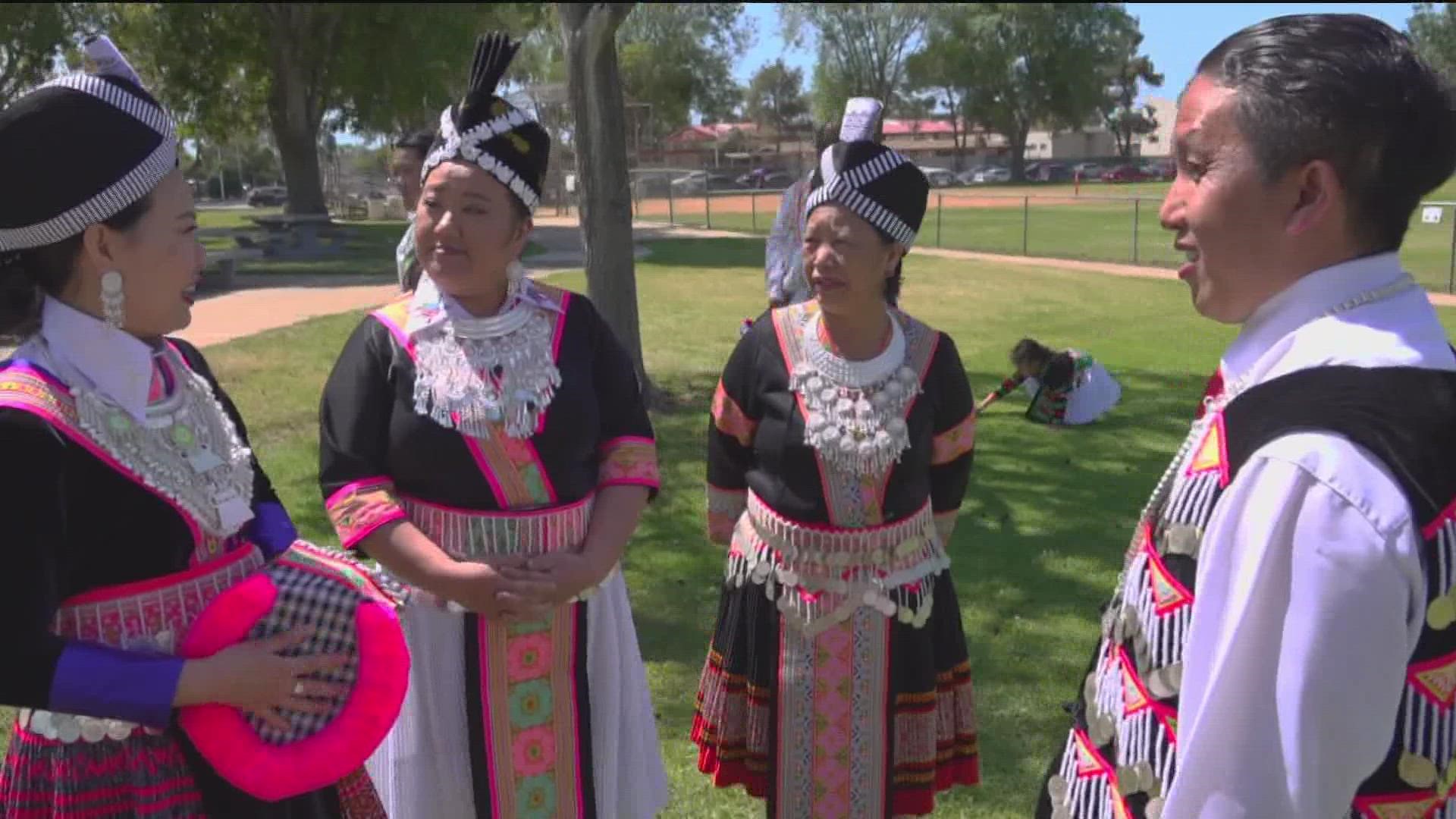SAN DIEGO — While San Diego County's Hmong community has dwindled in numbers over the past four decades, those who remain are determined to keep their culture alive.
Among them is San Diegan Pa Yang, who is ready to celebrate.
"I feel like we've been locked up and put away," she laughed. "I miss seeing the Hmong community come together!"
It is a vibrant community here in San Diego County, largely kept apart for the past two years by the pandemic: a community that many San Diegans know little about.
"Historically, we've come a long way,' Yang said.
It's a history that stretches back thousands of years. Members of an ethnic group without a country of their own, the Hmong migrated from China to Laos, Thailand and nearby countries more than three centuries ago.
"We were considered, you know, the 'poor people' of Asia," Yang added. "We lived in the mountains, lived in huts."
Following the Vietnam War, in which the Hmong helped U.S. forces fight the communists, tens of thousands were forced to flee, first to refugee camps and then to the United States.
During the late 1970s and early 1980s, about 5,000 Hmong made their way from southeast Asia here to San Diego to start a new life.
Among them was Ia Vue. One of only six in her family to survive the war, Ia settled in Linda Vista in 1980. That is where she raised her family, helping support them through her unique talents in an elaborate form of cross-stitching known as paj ntaub.
She uses her talents to create elaborate story cloths, capturing through images not only her people's history. but her own personal journey fleeing to safety.
"She had to cut bamboo to put it under their arms to help them float across the river,' said Yang, translating for Vue.
Her experience is far different from members of the Hmong community born and raised here in San Diego, like her son, Richard.
"Growing up, it was a little difficult for me," Richard Vue said. "It was a clash, a clash of cultures."
Richard is also committed to keeping the Hmong culture alive. For the past twenty years, he has served his community as a shaman, a spiritual healer who performs traditional rituals and ceremonies, including weddings and funerals.
"We help celebrate the person's life, to heal them," he explained.
A crucial part of those ceremonies is the traditional Hmong clothing, which is on full display during Hmong New Year celebrations.
"It has changed over time," Yang said. "We used to be more bland, more plain... and now we are more colorful."
Also critical to keeping the culture alive is maintaining the Hmong language: a tonal language that historically was not written down.
Pa Yang is now working to teach it to her kids, including 12-year-old Lily.
"I want to try to learn more of it," she said, "just so I can keep on passing it down."
Over the decades, though, the San Diego's Hmong population has dwindled in numbers, many moving out of the area in search of more affordable housing.
Recent UCSD grad Kong Yang plans on staying, though, to work as a social worker in City Heights, where he grew up.
"For me growing up, it's like trying to find that balance of being Hmong and being American at the same time," he said.
In North County, one Hmong family is working to bring those cultures together.
Yeng Lor and her husband Doua Chang recently moved to an eight-acre property in the hills of San Marcos.
"I think that gives us the feeling of going home, going back to the mountains," Chang said.
They are now working to transform their five-bedroom Spanish Colonial into a bed-and-breakfast showcasing their Hmong culture to all guests, no matter what their background.
"We really want to transform this place into something that is very welcoming, with the fusion of our Hmong culture," he added.
This would include cultural workshops, from music to crafts, as well as typical Hmong dishes to serve their guests.
"If you've ever been to a Hmong house, you know that you cannot leave until you eat," Chang laughed.
Nestled next to a vineyard, this unique B&B will also feature Hmong gardens, as well as a traditional, and educational, Hmong house to teach guests about the history of their people.
"It's very humbling, actually," Lor said. "And it's just something that we can also be proud of because I feel like we have come so far."
It's a story that continues into the future.
"I'm just really proud of who we've become and where we have come from," Pay Yang added. "So it is exciting to see where our next generation of kids will go."
WATCH RELATED: Flash mob of middle-aged women shine spotlight on Korean culture in San Diego:

